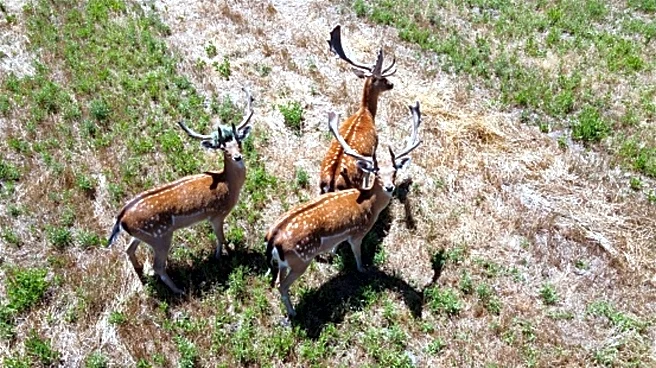What's Happening?
In Fort Collins, Colorado, a group of rabbits has been observed with unusual hornlike growths on their faces, a condition caused by the Shope papillomavirus. This virus, which is relatively common among cottontail rabbits, leads to wart-like growths that can resemble horns. The phenomenon has captured public attention, with residents sharing photos and dubbing the affected rabbits with names like 'Frankenstein bunnies' and 'zombie rabbits.' Despite the alarming appearance, the virus is mostly harmless to the rabbits unless the growths interfere with their ability to see or eat. The Shope papillomavirus, named after Dr. Richard E. Shope who discovered it in the 1930s, has historical significance as it contributed to the understanding of the relationship between viruses and cancer. The virus is spread by fleas and ticks, particularly active in the summer, and does not pose a threat to humans or other animals.
Why It's Important?
The appearance of these 'horned' rabbits in Colorado highlights the intersection of wildlife health and public curiosity. While the Shope papillomavirus is not new, its visibility in urban areas can lead to increased public awareness and interest in wildlife diseases. This situation underscores the importance of understanding zoonotic diseases and their potential impacts on ecosystems and human health. The virus's role in historical scientific research also emphasizes the ongoing relevance of studying animal diseases to gain insights into human health issues, such as cancer. For local wildlife agencies, managing public perception and providing accurate information is crucial to prevent unnecessary alarm and to promote coexistence with wildlife.
What's Next?
Colorado Parks and Wildlife is likely to continue monitoring the situation and may increase public education efforts to inform residents about the virus and its effects. As the summer progresses, the agency might also focus on controlling flea and tick populations to reduce the spread of the virus among rabbits. Public interest could lead to further scientific studies on the virus and its implications, potentially contributing to broader research on papillomaviruses. Additionally, wildlife enthusiasts and researchers may use this opportunity to engage the public in citizen science projects, encouraging them to report sightings and contribute to data collection.
Beyond the Headlines
The fascination with these 'Frankenstein bunnies' taps into a broader cultural narrative about mythical creatures like the jackalope, which may have been inspired by similar viral infections in rabbits. This connection between folklore and science highlights how natural phenomena can influence cultural stories and vice versa. The situation also raises ethical considerations about human interactions with wildlife, particularly in urban settings where such encounters are more frequent. Balancing curiosity with respect for wildlife is essential to ensure that these animals are not unduly stressed or harmed by human activities.















